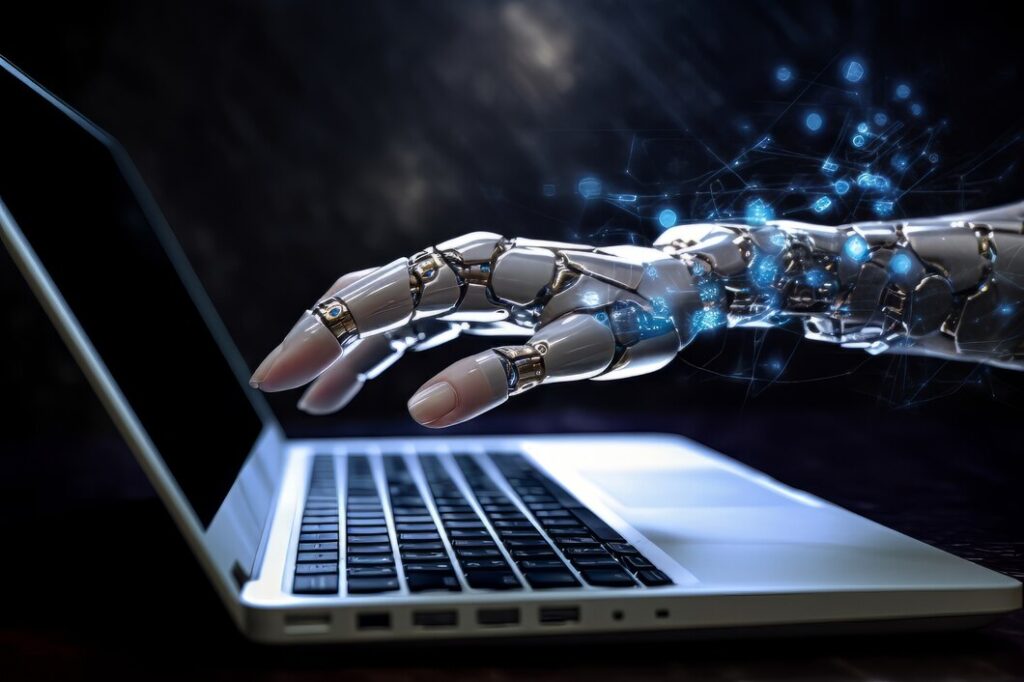Hey! Do you know what actually ChatGPT VS AI are? Use Cases In the realm of artificial intelligence, ChatGPT and AI are often used interchangeably, creating confusion about their true nature and functionalities. Let’s delve into the nuances that set ChatGPT apart from AI as a whole and explore the myriad use cases that each encompasses.
Table of Contents
Defining the Terms: ChatGPT vs AI
What is Artificial Intelligence (AI)?
AI is a broad term that encapsulates the development of machines capable of performing tasks that typically require human intelligence. This includes learning, reasoning, problem-solving, perception, and language understanding. AI can be categorized into narrow or weak AI, which is designed for a specific task, and general or strong AI, which possesses the ability to understand and execute any intellectual task that a human being can.
What is ChatGPT?
ChatGPT, on the other hand, is a specific implementation of AI. It is a language model developed by OpenAI, and its core function revolves around natural language processing. Unlike traditional AI, which may encompass a wide array of applications, ChatGPT is tailored to excel in conversational contexts, generating human-like responses based on the input it receives.

The Key Differences
Scope of Functionality
The primary distinction lies in the scope of functionality. While AI is a vast umbrella term encompassing various applications, ChatGPT is a specialized form of AI dedicated to natural language understanding and generation.
Training Approach
AI models are trained using diverse methodologies, including supervised learning, unsupervised learning, and reinforcement learning. ChatGPT, specifically, is fine-tuned through a process known as unsupervised learning, where it learns from a vast dataset without explicit instruction on the desired output.
Natural Language Processing Focus
ChatGPT’s forte is natural language processing, which involves understanding and generating human-like text. Traditional AI may involve image recognition, problem-solving, and other cognitive functions, whereas ChatGPT is honed for textual communication.
Limitations: ChatGPT vs AI
While AI can be molded and applied to a myriad of tasks, ChatGPT has its limitations, especially in terms of contextual understanding. It may struggle with context retention in longer conversations and might generate responses that seem coherent but lack a deep comprehension of the subject matter.
ChatGPT Use Cases Unveiled
AI in Healthcare
In healthcare, AI is employed for diagnostic purposes, drug discovery, and personalized medicine. AI models can analyze vast datasets to identify patterns and predict potential health issues. ChatGPT, in this context, could facilitate patient communication, answering queries and providing information in a conversational manner.
ChatGPT in Customer Support
ChatGPT shines in customer support scenarios. It can be integrated into websites to provide instant responses to user queries, offering a personalized touch that mimics human interaction. This application enhances user experience and ensures swift issue resolution.
AI in Autonomous Vehicles
Autonomous vehicles heavily rely on AI for navigation, obstacle detection, and decision-making. AI algorithms process data from sensors to make real-time driving decisions. ChatGPT’s role in this domain might involve enhancing the in-car communication experience, making interactions with the vehicle more user-friendly.
ChatGPT in Language Translation
Language translation services leverage AI to understand and translate text. ChatGPT can be integrated into these services to not only translate text but also engage in natural and contextually relevant conversations, bridging linguistic gaps in a more human-like manner.
AI in Finance
In the financial sector, AI is used for fraud detection, risk assessment, and algorithmic trading. It helps analyze market trends and make data-driven predictions. ChatGPT could be employed to improve communication in financial apps, providing users with detailed insights and explanations in a conversational format.
ChatGPT in Education
In educational settings, ChatGPT can serve as a virtual tutor, assisting students with homework, answering queries, and providing additional explanations in a conversational manner. This personalized learning experience can enhance comprehension and engagement.
Conclusion
In conclusion, while ChatGPT is a specialized application of AI, the distinction lies in its focused expertise in natural language processing. AI, as a broader term, encompasses a spectrum of applications across various industries. Understanding these nuances is crucial for discerning the capabilities and limitations of each, enabling us to harness their potential in diverse and innovative ways. As technology evolves, the synergy between AI and specialized models like ChatGPT will continue to shape the landscape of human-computer interaction.
YOU MAY LIKE: Wedding Quotes In English
Is chatGPT and AI are same?
No, ChatGPT and AI are not the same. ChatGPT is a specific implementation of artificial intelligence (AI) that falls under the category of natural language processing (NLP). AI is a broader term that encompasses a wide range of technologies and systems designed to perform tasks that typically require human intelligence.
In essence, ChatGPT is a specialized model developed by OpenAI for generating human-like responses in natural language conversations. It uses a form of AI, specifically deep learning techniques, to understand and generate text based on the input it receives. While ChatGPT is a remarkable example of AI applied to conversational contexts, AI as a whole encompasses various other applications, including image recognition, problem-solving, autonomous systems, and more.
In summary, ChatGPT is a specific application of AI that excels in natural language understanding and generation, but AI itself spans a broader spectrum of capabilities and use cases.
YOU MAY LIKE: Best Birthday Wishes For Best Friend
Is chatGPT uses AI?
Yes, ChatGPT is a product of artificial intelligence (AI). It is built upon advanced machine learning techniques and specifically falls under the category of natural language processing (NLP), which is a subset of AI. OpenAI, the organization behind ChatGPT, has employed deep learning models and extensive training datasets to enable ChatGPT to understand and generate human-like text responses in a conversational context.
In other words, ChatGPT is a specialized application of AI that focuses on language-related tasks. It utilizes AI techniques, particularly deep learning and neural networks, to process and generate coherent text based on the input it receives. While ChatGPT is a powerful example of AI in action, it’s essential to recognize that AI itself is a broader field encompassing various applications and technologies beyond natural language processing.
What is the fundamental difference between ChatGPT and AI?
ChatGPT is a specialized implementation of artificial intelligence (AI) that focuses specifically on natural language processing, whereas AI encompasses a broader range of technologies and applications beyond language-related tasks.
How is ChatGPT trained, and what sets its training approach apart from general AI models?
ChatGPT is fine-tuned through unsupervised learning, where it learns from extensive datasets without explicit instruction on the desired output. This training approach allows it to generate human-like responses in a conversational context.
What are the key limitations of ChatGPT compared to general AI?
ChatGPT may struggle with context retention in longer conversations and can generate responses that seem coherent but lack a deep comprehension of the subject matter. General AI, being more versatile, might outperform ChatGPT in tasks outside the realm of natural language processing.
In which industries can we find applications of AI, and how does ChatGPT fit into this landscape?
AI finds applications in various industries such as healthcare, finance, autonomous vehicles, and education. ChatGPT, being a language model, excels in enhancing user interaction and communication within these industries, particularly in customer support, language translation, and educational assistance.
How does ChatGPT contribute to user experience, especially in customer support scenarios?
ChatGPT can be integrated into websites to provide instant and personalized responses to user queries, mimicking human interaction. This enhances user experience by offering swift issue resolution and a more engaging conversational interface.
Can AI and ChatGPT work together, and what benefits does this collaboration bring to technological advancements?
Yes, AI and ChatGPT can collaborate synergistically. AI, with its broader scope, can handle various tasks, while ChatGPT specializes in natural language processing. The collaboration ensures a more holistic and human-like interaction in applications ranging from healthcare and finance to autonomous vehicles and education.


1 Comment